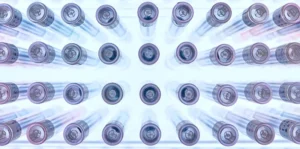FEBRUARY 14, 2013
Can a DNA Test Predict Your Success in Love?
This Valentine’s week at DDC, we’re taking time out from the usual to discuss the topic of DNA compatibility. This topic was brought to national attention a few years ago by a landmark “sweaty t-shirt study.”
In the experiment, men were asked to wear the same T-shirt for two nights. They then returned the shirts to the scientists, who packaged each shirt in a box equipped with a “smelling hole.” In turn, women were asked to sniff the shirts and rate the odor in terms of intensity, pleasantness, and sexiness. Significantly, the women were attracted to the odor of males whose genes for an immune system component, the major histocompatibility complex (MHC), were vastly different from their own.
This result seems to indicate that opposites do attract, on a genetic level. Some suggest that we are wired to do so in order to ensure a good genetic variation in the next generation–and thus improved chances of survival. A similar study on married couples found that the couples were less likely to share similar genes for the human leukocyte antigens (HLA). Couples who do share HLA variants were found to have increased associations with recurring spontaneous abortions, reduced body mass in babies, and longer intervals between successive births.
Does this mean that prospective mates should test their DNA to see if they are compatible, in an effort to avoid failed relationships? Not just yet. Scientists are quick to point out that we are a product of both our genetics and experiences (nature and nurture).
For now, here at DDC, we’re sticking with what’s clear and determined: a child’s DNA is a combination of alleles inherited from the mother and father. And that’s the basis for all our family relationship DNA tests.
About DNA Diagnostics Center (DDC)
DNA Diagnostic Center is the world leader in paternity and relationship testing. We serve healthcare professionals, government agencies, and individuals around the world to determine family relationships with trusted accuracy.
More Questions? Don’t hesitate to call us: we’re here to help!
CALL NOW




